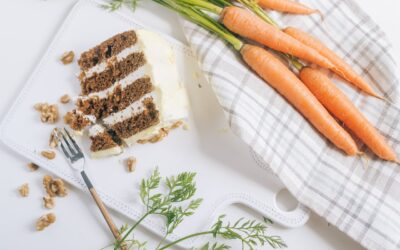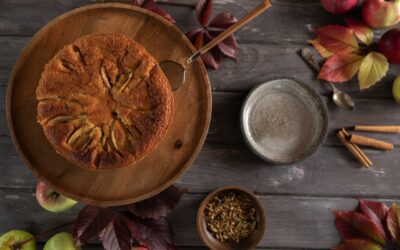To mark the end of GBS awareness month, we hosted a tea party on Friday 31 May. We were delighted that around 70 guests turned up, including our lovely new ambassador, Lee Clark, who brought along a couple of members of his family too.
We put on, what we hope was a good spread – a proper, traditional, old fashioned tea party! This was helped largely by the baking prowess of our wonderful CEO, Caroline. I had a chat with her to prize out of her the recipe she used for the chocolate cake that took centre stage on a table overflowing with sweet treats and gooey goodies. Here’s what she told me:
I am very lazy (author’s note – oh no you’re not Caroline!) so most of the cakes are basically the same recipe with different flavours!
Basic sponge recipe:
175g granulated sugar (why pay extra for caster?)
175g margarine or butter
200g Self raising flour or, for a chocolate sponge, 175g flour and 25g cocoa
3 eggs
Method:
Just throw all the ingredients into a food processor or mixer and add your choice of flavourings (so my favourites are):
- For lemon drizzle add zest of 1 lemon and ½ teaspoon of lemon extract
- For coffee and walnut add large glug of Camp Coffee or you could use a couple of tablespoons of strong black coffee, then as many chopped walnuts as you like, after mixing
- For vanilla, a teaspoon of vanilla extract – mix until light and fluffy
- For chocolate, add cocoa as above – but for a really naughty cake add some chocolate chips once mixed
Then mix until you have a smooth batter – this only takes a couple of minutes, add your extra bits (nuts or choc chips). This is enough batter for filling 2 x 7inch sandwich tins, or 2 x 1lb loaf tins or 1 x 2lb loaf tin. Make sure you grease the tins and I always use a loaf tin liner or a circle of greaseproof paper in the bottom of the sandwich tins.
So, set your oven at 180C or 160C if a fan oven and once up to temperature cook for around 45 minutes (it can take a little bit longer but it really depends on the oven – one of my ovens takes 45 minutes and the other 55 minutes and they are exactly the same oven!) They should feel springy to the touch or if a skewer is inserted it should come out clean. Once cooked, turn out the cakes – except the lemon drizzle, on to a rack to cool.
How you decorate them is your choice but this is what I did:
- Lemon drizzle: I mixed 100g of sugar with around 200ml of lemon juice, with the cakes still cooling in the tin, spike the cake all over with a cocktail stick and spoon the sugary lemon all over the cake. A real crowd pleaser!
- Coffee and walnut: Make a butter cream (600g icing sugar and 300g softened butter beaten together with camp coffee or black coffee to your taste) – for a loaf cake I just spread or pipe on to the top but you might want to slice the cake and fill the middle as well. Decorate with walnut halves – looks pretty and helps to identify what the cake is!
- Chocolate: This one does not always need buttercream especially if you’ve added the chocolate chips – but for extra decadence make the buttercream using the same recipe. Just add some cocoa to make really chocolatey or you could melt chocolate and drizzle on the top. You could even add fruit – raspberries or strawberries go well with chocolate and count towards your 5 a day (doesn’t chocolate too?)!
- Vanilla sponge: This one can be used in lots of ways, vanilla flavoured butter cream and some jam, or my favourite is raspberry jam and desiccated coconut. But really let your imagination run wild and create your own fillings and toppings or take inspiration from The Vicar of Dibley and try Marmite, lemon curd with ham and cheese, and a bewildering concoction of chocolate with cod’s roe.
Hmmm. Let’s move swiftly on to the scones. It’s confession time I’m afraid – I didn’t make these myself. However, I do have a simple scone recipe to recommend:
Scones
500g plain four
300ml milk
75g butter
5 teaspoons baking powder
Method:
Heat oven to 200C
In a food processor mix flour, baking powder and butter until it looks like fine breadcrumbs, gradually add the milk until it all forms a dough.
Scone dough does not like being handled much so flour the surface and your hands and gently flatten the dough until about 2cm deep. Using a pastry or cookie cutter (our tortoise one works well), cut out the shapes and space out on a floured baking sheet. Bring left over dough together and cut more shapes, repeat until you have used all the dough. Brush the top of the scones with beaten egg or milk and cook for about 12 – 15 minutes until well risen with a golden top.
These are best eaten on the same day (and probably difficult to resist anyway) – preferably warm with jam and clotted cream.
Now it’s your turn!
Come on everyone, surely there can’t be any excuses not to host your own tea party now and try out some of Caroline’s recipes? This is such a great, sociable way to raise money to help those with Guillain-Barre syndrome.




